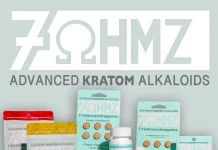There is a higher potential for adverse effects and drug interactions when using a chemical or plant that has a profound physiological influence on the body. None of these characteristics are exclusive to Kratom.
Finding a plant or drug that may treat symptoms without also causing them is impossible. Simply having access to a drug with a significant impact implies that there is always the chance of experiencing that effect to an unhealthy degree.
Kratom has several drug interactions, some fatal, while others controllable with careful dosing.
Always with your physician before beginning kratom usage, especially if you are already taking prescription drugs.
Can I Take Kratom With My Current Medication Routine?
Kratom, by itself, poses no risk. Unfortunately, you should not use most prescription drugs while also using Kratom. Any substance processed by the CYP2D6 enzymes is an example of a potentially lethal type of drug.
The potential of Kratom to alter the brain’s neurochemistry equilibrium underlies many of its beneficial effects. However, the risk of adverse effects increases if you use it with drugs that produce a relative change in the body.
How Different Drugs Interact with Kratom
Although Kratom’s interactions with other classes of medications can vary, we can generally summarize them in the following three situations:
1. Antagonistic Interaction (Decreased Effect)
The negative impact of the prescription being taken is counteracted by Kratom, resulting in an interaction. For example, medications may be less efficient in dealing with a health problem if Kratom counteracts or suppresses their actions.
As a patient’s treatment effectiveness decreases, the core condition may again manifest its symptoms. This impact has the potential to be harmful in some states.
2. Agonistic Interaction (Increased Effect)
Some drugs have side effects that are similar to those produced by Kratom. As the impact gets more potent, there is a higher chance of adverse reactions or even toxicity.
At milder dosages, Kratom may be stimulating. However, the exciting effects might become excessively powerful if coupled with other psychostimulants such as Adderall or Ritalin, thus increasing the risk of cardiovascular disease, hemorrhage, gastrointestinal discomfort, or sleeplessness.
In larger quantities, Kratom has a calming effect. It may cause relaxation and drowsiness, but the effect might be considerably more profound when taken with other hypnotic drugs. Users should avoid doing so if they have driving obligations or are accountable for minors or pets.
3. Metabolic Competitor (Slowed Elimination)
The liver has a group of enzymes named cytochrome P450 that are responsible for the metabolism of all medications. Numerous variants exist, each optimized for processing a particular class of chemicals.
Cytochrome P450 isoenzymes 3A4, 2D6, 1A2, 2C9, and 19 are responsible for the metabolism of around 70% of all medications.
There are more than twelve active compounds in Kratom, most of which are alkaloids. The CYP enzymes CYP2C9, CYP3A4, and CYP2D6 are responsible for metabolizing the vast majority of these substances, albeit their specific tolerances differ.
When you combine a drug that has to be metabolized in a certain way with Kratom, the two will fight for the same metabolic pathway, slowing the removal of both.
This may indicate that Kratom and the drug will stay in circulation for extended periods and at a greater concentration.
This often isn’t a big issue for single dosages. However, this antagonistic interaction is a serious issue for commonly prescribed drugs. If the drug isn’t eliminated quickly enough, it might accumulate in circulation over time. There is a risk that, over time, this may reach toxic levels, greater the chances of adverse consequences and even fatal dosage.
3 Medication Classes That Don’t Mix Well With Kratom
Although there are a number of medications that react negatively with Kratom, here we are mentioning 3 of them.
1. Kratom + Zoloft
The likelihood of an interaction between kratom and tricyclic medicines is high. To a lesser extent, kratom might enhance the likelihood of having prescription adverse effects, such as seizures, sleeplessness, hallucinations, or vomiting.
The combination of kratom with antidepressants such as Zoloft has the potential to cause serotonin syndrome, which is potentially lethal in extreme cases.
Antidepressants of the tricyclic class were the first of their kind. Although they are seldom used nowadays due to the significant risk of adverse effects, some clinicians still go for them when more contemporary treatments fail to provide an adequate therapeutic response.
2. Kratom + Tremadol
The combination of kratom and tremadol is sufficient to have harmful or even fatal consequences for the user. The threshold for an overdose is lowered by tramadol and kratom because they stimulate receptor sites.
The liver’s ability to metabolize kratom and tremadol is both at stake. When used simultaneously, they may reduce the body’s power to dispose of both chemicals, increasing the likelihood of unwanted consequences. Doses given often exacerbate the problem.
CYP2D6 is principally responsible for the metabolism of kratom and tremadol.
Combining tremadol with kratom increases the likelihood that the user may have serious complications due to the higher-than-average concentrations of tremadol in the circulatory system.
3. Kratom + Vyvanse
Vyvanse and kratom both work well to lessen the impact of ADHD. However, each operates in a somewhat unique way. Vyvanse is an amphetamine prescribed to enhance motivation and focus by increasing dopamine and norepinephrine neurotransmitters.
Both aid with concentration, self-control, and focus when taken together. In comparison to kratom, Vyvanse is a far more potent stimulant.
Kratom is a natural supplement from the Mitragya speciosa plant, related to the coffee plants. Because of its dose dependence, kratom may have a stimulating effect in low dosages and a sedative effect in high ones.
Treatment is likely required for those with severe cases of ADHD. However, kratom has shown promise for patients with moderate to severe cases of ADHD.
Conclusion
Kratom is safe when used in moderation. It includes therapeutically effective functional alkaloids that, when taken appropriately.
While Kratom has many positive effects, it is possible to have unwanted unfavorable reactions with other medications. It may have harmful side effects if used with other medicines that use the same metabolic pathway or induce their change in neural mechanisms.
Using Kratom with any medicine and without seeing a physician is not recommended.








